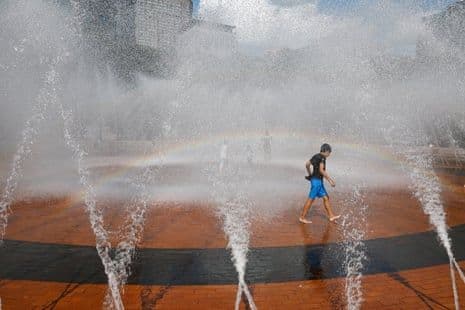Frozen Frontiers: Navigating the Shifting Landscapes of 'Ice' in the 21st Century
From melting glaciers reshaping our planet to the frosty dynamics of global policy, 'ice' defines our era. Explore its impact on climate, communities, and our future.
The Planetary Chill: Climate Science and the Earth's Melting Core
Our planet is undeniably in the grip of a profound transformation, driven by the relentless thawing of its literal ice. From the vast, ancient glaciers of Antarctica and the towering peaks of the Himalayas across Asia, to the shrinking ice sheets of North America and Europe, the evidence of a warming world is stark and undeniable. This isn't merely a localized phenomenon; it’s a global shift impacting every continent, altering weather patterns, and reshaping natural wonders. Scientists observing these changes highlight a future where rising sea levels threaten coastal communities from Africa to Australia, and where extreme weather events become the new normal. The very core of our Earth's delicate climate system is being fundamentally rewired, pushing ecosystems and human societies to their limits. Understanding this planetary chill, steeped in complex weather and science, is the foundational step toward grasping the interconnected challenges of our era. The physical melting of ice is more than just a metric; it's a harbinger of broader systemic shifts that demand our attention and collective response.

Walls of Winter: Unpacking Institutional 'Ice' and Societal Divides
Beyond the tangible ice of our environment, a different, equally formidable 'ice' calcifies within human systems: institutional barriers and societal divides. These unyielding structures manifest as rigid policies, bureaucratic inflexibility, and a stark lack of accountability that often deepens rifts within communities. Consider the contentious situation surrounding the in . Here, the federal government's immigration processing center has become a flashpoint, illustrating how institutional 'ice' can freeze relations between citizens and authorities. Allegations of federal agents using tear gas and force against peaceful demonstrators, coupled with a lack of clear identification and body cameras, provoked strong condemnation from . His criticism, highlighting actions that "deepen the divide" and an "aggressive approach trying to inflame the situation," points to the chilling effect of opaque governance and unyielding federal mandates clashing with local sanctuary policies. This metaphorical 'ice' isn't just about political disagreement; it creates tangible friction, eroding trust and fostering deep-seated resentment within the very fabric of society.

Beneath the Surface: Human Stories from the Edge of the Freeze
The impact of this institutional 'ice' isn't abstract; it's intensely personal and profoundly disruptive to everyday lives. In , the simmering tensions around the have spilled over, transforming a community into a landscape of fear and displacement. Residents venturing out at night have faced attacks and threats, with footage capturing gunshots and violence that speak to a profound breakdown of civic order. The Cottonwood School, a place meant for learning and growth, was forced to relocate after finding "munitions" in its playground – a chilling testament to how distant policy disputes can directly endanger children. The vibrant street life, once marked by a man in a chicken suit waving to cars, now contends with a visible federal presence and an undercurrent of aggression. Even the facility's breach of city permit rules by holding detainees overnight underscores the human cost, as individuals seeking asylum or facing immigration cases are caught in a system that often prioritizes rigidity over humanity. These are the raw, human stories from the edge of the freeze, where the unyielding nature of institutional 'ice' carves deep scars into communities and individual psyches.
Thawing Solutions: Innovation, Adaptation, and Designing for a Fluid Future
Navigating these frozen frontiers, both environmental and institutional, demands an urgent shift towards innovative, adaptive, and fluid solutions. On the climate front, the path forward involves a global pivot towards sustainable business practices, green living initiatives, and significant investment in climate solutions powered by science and technology. We're talking about everything from renewable energy infrastructure to advanced carbon capture, all designed to slow the planetary thaw. Simultaneously, thawing institutional 'ice' requires a different kind of innovation: one rooted in civic engagement, policy reform, and a commitment to transparency. 's openness to discussing the city taking over the lease, for example, hints at the potential for mutually beneficial solutions through dialogue and negotiation, rather than confrontation. We must leverage innovation and artificial intelligence not just for technological advancements, but for designing governance models that are more responsive, accountable, and less prone to calcifying into rigid barriers. Cultivating a future where systems are designed for fluidity, embracing adaptation, and prioritizing human well-being is not just an ideal; it's an imperative for our shared survival in this rapidly changing world.
Related Articles

Beyond the Wild: How Alaska Mirrors Humanity's Greatest Challenges

Beyond the Wild: How Alaska Mirrors Humanity's Greatest Challenges

America's Invisible Inferno: Confronting the Silent Summer Killer

America's Invisible Inferno: Confronting the Silent Summer Killer

The Mercury's New Horizon: Navigating an Era of Unfamiliar Climates

The Mercury's New Horizon: Navigating an Era of Unfamiliar Climates

Beyond the Mercury: Cultivating Resilience in a Warmer World
